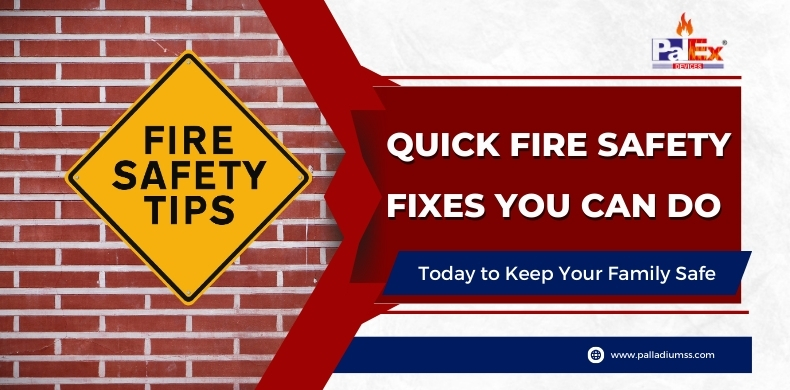About fire safety, delaying is risky. Many house improvements need a lot of time and money, but there are many easy solutions you can put in place today that greatly enhance your family’s protection. These small steps may seem negligible, but they could be very important during an emergency situation.
Test Every Smoke Detector Right Now
The simplest and most crucial step for fire safety is very quick. Just push the test button on each smoke detector in your house. If any alarm does not make a noise, you should change the batteries right away. You don’t have batteries? Keep them as priority on your shopping list and purchase them today. A smoke detector that works properly can reduce the chance to die in a house fire by 50%. So, this easy check could save lives.
Clear Your Home’s Escape Routes
Allocate ten minutes to stroll around your house making certain all escape routes are readily accessible. Clear away any mess obstructing windows or doors that may act as emergency exits. Give particular scrutiny to bedrooms – everybody should have two potential exit paths. Shift any furniture that could potentially hinder a swift exit, and make sure windows are able to open without difficulty. If security bars are present, confirm their fast-release mechanisms are functioning correctly.
Create Distance from Heat Sources
Observe your home with a new perspective. Can you see papers close to the toaster? Or kitchen towels hanging very near to the stove? Coverings on top of room warmers? Make a safety space of three feet around each heat source in your house. This fast rearrangement could stop usual triggers for fire and only takes a few minutes to finish.
Address Your Electrical Safety
Please, make a fast check on your electric sockets. Remove the plugs of devices that you do not use at this time, especially if they are power strips which might be too filled up. Look out for any socket covers feeling warm – their temperature should never feel hot when touched by hand. Search for damaged wires and fix or change them at once. These easy inspections can stop electrical fires, which are a top reason for house fires.
Kitchen Safety in Five Minutes
In most houses, the kitchen is typically where fire begins. But you can take a few minutes to increase safety in this area. Keep things like paper towels and washcloths at a distance from your stove. Ensure that your fire extinguisher is within easy reach and not beyond its use-by date. Remove accumulation of grease from the stove and nearby zones. Doing these fast measures greatly lower your chances for kitchen fires.
Emergency Contact Update
Please spend five minutes to renew the emergency contacts in your phone and put them at a place where it is easy to see. It should have numbers for fire, police, poison control, as well as reliable neighbors. Ensure all family members are aware of this information’s location. In an emergency, having these numbers readily available saves precious time.
Dryer Safety Check
The machine you use for drying clothes could pose a risk of fire, but conducting maintenance checks swiftly can assist in avoiding such issues. You must cleanse the lint filter comprehensively – not only on surface level, go deep cleaning with a vacuum attachment if it is feasible to do so. Look behind the dryer for any pile-up of lint and remove it thoroughly. These simple steps prevent one of the most common household fire sources.
Meet Your Family Tonight
Call your family for a 15-minute meeting on fire safety. Look over or make an exit strategy, point out where you all should meet outside and rehearse the emergency procedures. Make it interesting for children by presenting it as a game, but be certain that everyone comprehends the gravity of safety against fire.
These fast solutions need less time and money but give the most security. The excellent part? Most of them can be finished today, giving you instant mental comfort. The protection from fire does not always need extensive changes or costly devices – occasionally, the easiest activities create a huge impact in safeguarding your loved ones.










